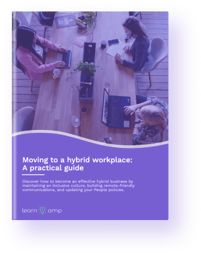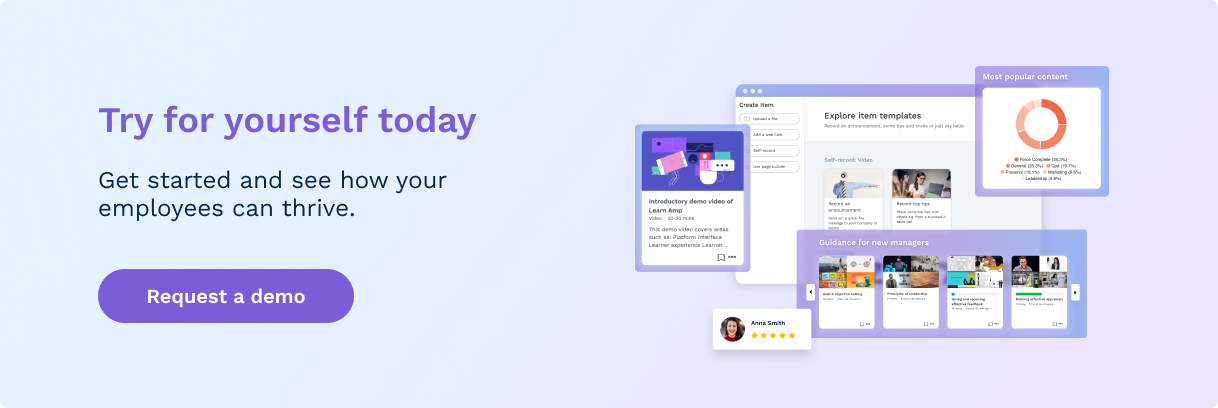With the pandemic on the wane, employers and employees disagree about how
productive it is to continue working from home. To overcome this disconnect,
businesses need the right tools and strategies for defining and measuring
productivity and performance—and a healthy dose of trust.
Necessity is the mother of invention, and when the Covid-19 crisis hit, companies had to innovate on the hoof and adapt to hybrid working to stay in business and to stay productive. Post-crisis, though, many employers are eager to get back to the old, familiar ways of working. But employees have other thoughts. Many have discovered that working from home suits their work-life balance, and 3 out of 4 employees say it makes them happier and is better for their mental health1.
What’s more, employees also think they work better at home. A recent survey from Microsoft found that 87% of hybrid workers say they’re at least as efficient as in the office. However, since they’re not seeing it first-hand, just 12% of leaders share that confidence2. But Microsoft CEO Satya Nadella acknowledges that hybrid work is here to stay, this mismatch—and the “productivity paranoia”3 behind it—needs to be overcome.
Here, we look at why this disconnect exists, how to overcome it and how effective performance management with the right digital tools can help businesses not only measure productivity but maximise it, even with hybrid workforces.
Why the disconnect?
Many managers worry that hybrid work disrupts company culture, hampers
communication, and crucially, hinders productivity. Microsoft’s study found that
54% of managers think hybrid arrangements gave them less visibility into their
employees’ output. Almost half said they struggle to trust that remote staff are
doing their best work.
This issue of trust is a risky one. Employees want to feel trusted and respected4, but they also want flexible working patterns. In fact, according to the State of
Remote Work Report 2021, 38% of employees would be willing to take a 5% pay cut
to work remotely at least part of the time5. Furthermore, In the era of the Great
Reshuffle6, insisting on a full-time return to the office could backfire.
A study from Accenture7 found that 63% of high-growth companies use a
“productivity anywhere” model, while 69% of negative or no-growth companies
prioritise on-site working. The study suggests that the work-from-home/work anywhere model does not hamper productivity—so long as employees have the support they need. Rather than a return to the old normal, perhaps what is needed is a change in mindset about the new normal.
How to ease the mismatch in expectations
If hybrid work is here to stay, how can reluctant managers overcome their
“productivity paranoia”? At Learn Amp, we think effective performance depends
on a number of vital elements: clarity about what’s expected, the ability to
measure activity and outcomes, the availability of effective coaching and
support, and—above all else—trust. Here are 4 performance management
approaches to maximise productivity for remote and hybrid workers.
1. Be clear about what productivity means
Perceptions of productivity differ because they are just that: perceptions.
Employees feel they are more productive; employers worry that they’re not. What
is needed is more objectivity across the board, so that everyone knows what the
expectations are and how to measure them.
How you measure productivity will vary for different companies, teams and roles8.
Sales teams might see productivity as the number of units sold per hour, while
project-focused teams might look more at achieving or missing milestones. The
important thing is that, however you define it, everybody understands what they
mean by productivity.
Tools like Learn Amp give business, managers and individuals the visibility to
increase this alignment. Instead of “perceived productivity”, everyone can really
be clear on what is expected of them and when. This information builds trust
because managers can measure and see results.
2. Measure activity and outcomes
Once you've worked out what performance and productivity looks like for you, you
can start measuring it. Again, different companies and teams may find that
different tools and approaches are useful for them. Some may like Stephen
Covey’s “Big Rocks”9 approach to prioritising. Many use Key Performance
Indicators (KPIs)10 to track whether objectives have been reached, although these
tend to focus on and assess the outputs, rather than the process.
Another approach used by many big players like Microsoft11 are Objectives and
Key Results (OKRs). OKRs demonstrate not only what you want to achieve, but how
you intend to achieve it, helping to set a clear performance-focused plan. Since
employees are responsible for setting and achieving their own OKRs, they can
have a sense of ownership of their role in the company’s success. In this way,
OKRs empower employees to perform at their peak, even when not on site.
With Learn Amp, OKRs can be set and assigned at every level, with tracking and
reminders to track progress towards results.
3. Use your tech stack to drive and manage performance
The right tech stack can give employees the flexibility to work at the time that's
best for them, while removing the pressure of being “on the clock” and in demand.
Tech tools can make asynchronous working12 and communication easy, so that
teams can maximise their efficiency. It may be a little slower and less immediate,
but used appropriately for the right tasks, it can produce more effective results.
Learn Amp’s platform offers flexibility, allowing everyone from managers, coaches,
mentors to contribute. Users can create agendas, share feedback, keep notes,
record actions, in a way that keeps productivity and performance structures
centralised and accessible.
4. Maintain communication and build trust
Just because your employees are not physically in the office doesn’t mean you
can’t keep in touch with their progress and performance. The biggest part of
building trust comes with how you manage your performance conversations. With
integrated people management tools, you can schedule weekly digital check-ins
and monthly 1-to-1s. With the metrics tracked, both managers and staff can come to the conversation prepared and informed.
Similarly, empowering employees to shape and direct their own learning and
development is a powerful way to build trust. To better motivate them in closing
their skills gaps, companies should use an LMS (Learning Management System)
and LXP (Learning Experience Platform) combo—a tool that provides the structure
and pathways for learners to develop, but also allows them to drive that
development themselves through engaging content that’s relevant to their
individual needs.
It’s what you do, not where you do it, that counts
It’s natural that changing times bring uncertainty. But it’s vital not to resist change
simply because the old ways are more familiar. Working culture is evolving in a
way that emphasises personal responsibility, and companies that embrace that
would seem to be more productive. With the right processes and technology—
and with the right attitude from employers and employees alike—your workforce
can be just as productive wherever they’re based.
Resources
[1] State of Remote Work Report 2021[2] https://www.microsoft.com/en-us/worklab/work-trend-index/hybrid-workis-justwork#:~:text=employees%20are%20doing.-,Productivity%20Paranoia,-There%20is%20a
[3] https://www.bbc.co.uk/news/business-62980639
[4] https://www.deboerfellowship.org/this-is-what-makes-employees-happy-at-work-michael-c-bush-ted/
[5] State of Remote Work Report 2021
[6] What is the Great Reshuffle and how is it affecting jobs? | World Economic Forum (weforum.org)
[7] https://www.forbes.com/sites/joemckendrick/2021/05/30/remote-work-evolves-into-hybrid-work-andproductivity-rises-the-datashows/?sh=35dfd1794825#:~:text=The%20events%20of,hybrid%20workplace%20emerges.
[8] https://www.cipd.co.uk/Images/productivity_2015-getting-best-out-of-people_tcm18-10313.pdf
[9] https://www.forbes.com/sites/hillennevins/2020/01/21/what-are-your-big-rocks/
[10] https://www.microsoft.com/en-us/microsoft-365/business-insights-ideas/resources/what-are-kpis-and-howto-use-them
[11] https://customers.microsoft.com/en-us/story/1500095825896917658-microsoft-partner-prosrvs-vivachapter4
[12] https://async.twist.com/asynchronous-communication/





